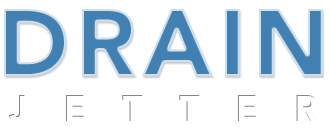The plunger, plumber's snake, drain rods, and chemical drain cleaners aren't working. It's time to try a drain jetter- one of the most effective solutions for unclogging drains.
What is a Drain Jetter?
A drain jetter, or sewer jetter, is a hydro-mechanical drain cleaner used for clearing drain blockages and obstructions. Often referred to as hydro-jetting, a drain jetter uses high-pressure water to clear drains.
There are various types of drain jetters and options:
- Electric
- Gasoline
- Propane
- Wheeled
- Truck-mounted
- Trailer-mounted
- Cold water
- Hot water
- Cold/Hot Water
Homeowners and small business with a pressure washer may be able to buy attachments for hydro-jetting drains. However, keep in mind that the hose may not be compatible with your home or office plumbing system. Additionally, they most likely won't allow for the clearing of any obstruction beyond the fixture's drain.
How to Use a Drain Jetter
Clogged drains fall into two categories and a drain jetter can be used for both. The most effective solution to any drain clog depends on what is causing the clog, and a drain jetter will clear most of them.
Single-Fixture Drainage Problems
If a single plumbing fixture (sink, toilet, tub, or shower) is backed-up or overflowing, the blockage is likely located in that fixture's drain or trap. A drain jetter is a very effective solution for these drain clogs. Chemical drain cleaners, plungers, drain augers, and sewer rods are also usually capable of solving these types of drain cleaning problems.
Single-fixture drain clogs are most likely caused by:
- Hair
- Hair products
- Grease
- Toilet paper
- Paper towels
- Sanitary products
- Cloth
- Cigarette butts
- Gum
- Toys
If it's not water, toilet paper, or human waste, don't flush it or put it down the sink. Your plumbing system and sewer weren't designed to handle anything else.
Multiple-Fixture Drainage Problems
When multiple plumbing fixtures are backed-up, overflowing, or draining slowly, chances are the clog is located in the branch, waste stack, or sewer line. You could also have a problem with your sewage system, septic tank, or a broken, cracked, or leaking pipe.
Whole-home drainage problems? Check with your neighbors to see if they're experiencing problems too. It could be a shared sewer line that is the responsibility of both homeowners. But, it could be a municipal line and a city problem- not your responsibility to fix. Contact your city's water department if that's the case.
Multiple-fixture drain clogs are most likely caused by:
- Tree roots
- Calcification from hard water
- Lack of routine drain cleaning
- Broken or cracked pipes
- Pipe leaks
You should always consult a professional plumber, drain cleaning service, or septic service for multiple-fixture drainage problems.
Hiring a Professional for Hydro Jetting
Today's plumbers and drain cleaning experts have a lot of state-of-the-art equipment and high-tech methods at their disposal. Sewer cameras, trenchless sewer replacement, drain jetters... is your local plumber up-to-date?
Hydro-jetting, or the use of a drain jetter, is a good sign that your plumber is at least within, if not ahead of, the times. A drain jetter's use of water makes it a very effective tool for fixing drainage issues.
Before any major plumbing repairs or pipe replacements for tree root intrusion you should consider hydro-jetting. Even with a sewer camera inspection, it is possible for grease and other obstructions to look like tree roots or sand and debris from a broken pipe.
While rooter service may be effective for some situations (like tree roots), they will often only drill a hole through the blockage instead of completely clearing it away. This makes drain jetters the better choice for clogs caused by grease, toilet paper, waste and similar obstructions.
Please Remember! Hydro-jetters can be dangerous and should only be used by professionals.
